

导航


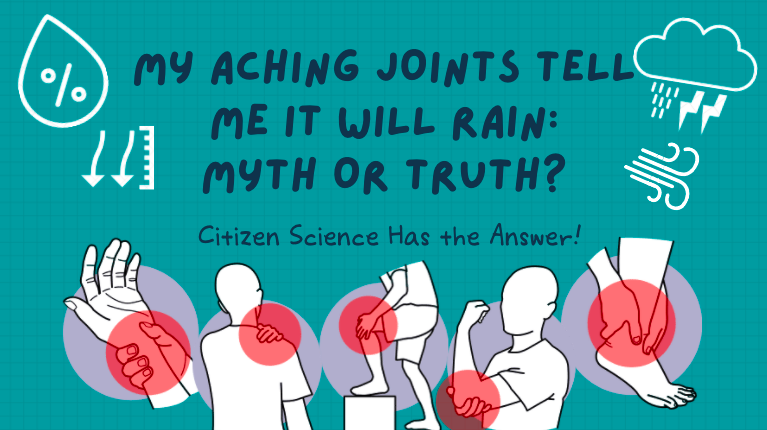
Do you believe that the weather could affect your pain?Welcome to our second feature story for the Citizen Science Demonstration Project Series! We are looking into an award-winning citizen-science research project with a poetic, but slightly melancholic, name Cloudy with a Chance of Pain.


|
More recently, you have probably heard people with arthritis mention that their pain worsens when it is raining or cold. Some of us may even experience it ourselves when the weather changes. According to Professor Will Dixon, Professor of Digital Epidemiology from the University of Manchester who led Cloudy with a Chnce of Pain, "around three-quarters of people living with arthritis believe their pain is affected by the weather". |
Despite this strong anecdotal evidence, many doctors are
skeptical of the link between weather and pain, in part because scientific
evidence to support the weather–pain association has been elusive. Most of this previous research was either poorly
designed or consisted of small sample sizes, leading to results that were not
statistically significant, not clinically significant, or even
contradictory.
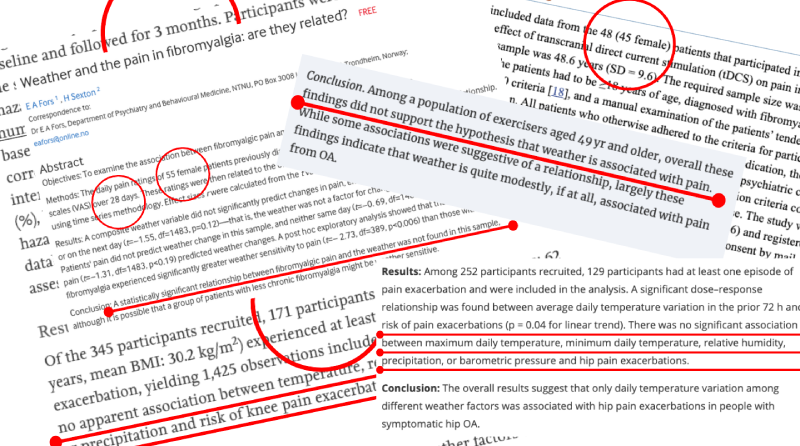
|
So, is the association between weather and pain a myth or truth? Cloudy with a Chance of Pain saw a fantastic opportunity to answer this question by engaging with a large number of people who live with chronic pain. The project ran for 15 months from 2016 to 2017 with over 13,000 people in the United Kingdom participating as citizen scientists. All participants had one or more conditions that caused chronic pain, with most having arthritis. They used a smartphone app to answer ten questions on their daily wellness on a scale of 1 to 5 (see below). The locations of the citizen scientists were determined by the GPS sensor in their phones, and this location was used to determine the local weather from the nearest Met Office observing station. |
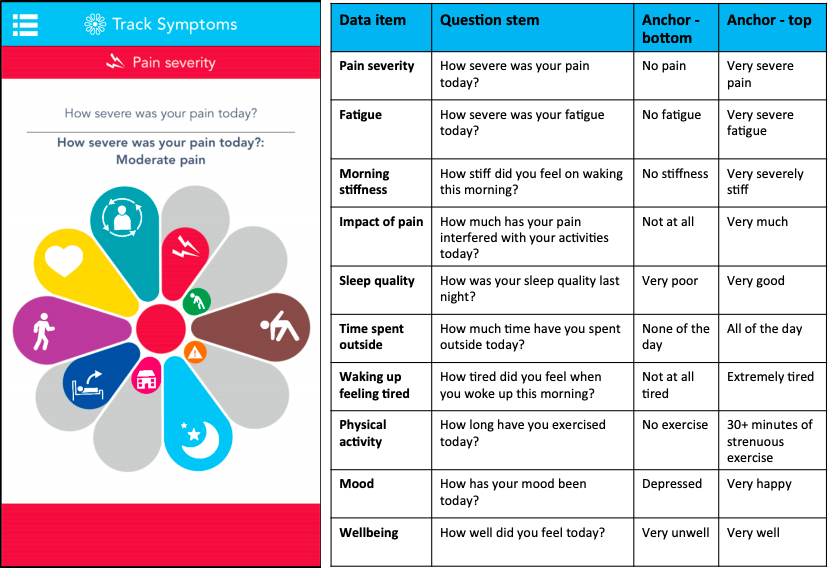
|
“This research highlights how citizen-science experiments can collect large datasets on real-world populations to address long-standing health questions.” ---- From the publication Dixon et al. (2019) "How the weather affects the pain of citizen scientists using a smartphone app" |
|
Importantly, Cloudy with a Chance of Pain project was a collaboration between epidemiology, rheumatology, meteorology and technology, and was one of the few research projects on the weather–pain association that involved a meteorologist. We interviewed Professor David Schultz, the lead meteorologist for the project, to give us some insights into Cloudy with a Chance of Pain. The interview below has been edited for conciseness and clarity. |

Q1: How was this study born?
A: In addition to being an academic, Professor Will Dixon is also a clinical practitioner who sees patients regularly. He heard a lot from his patients about their pain and the weather. But it’s not easy for patients to clearly recall their daily pain levels since their last appointment unless they keep a pain journal. Doctors need this information to offer treatment options for their patients. Therefore, the idea of a digital journal that they could keep on their smartphones was born. As long as we were doing that, we could also look at the weather–pain association. Will had the connections to uMotif, who developed the app and managed the data collection for us. After that, it was about recruiting patients.
Q2: It has been a very successful project with over 13,000 people downloading the app and over 10,000 contributing some data. How did you do it?
A: There were several factors. First, we had a very good underlying question, and it’s relatable to many people’s lives. So, we had many volunteers who were eager to see the results. Second, the media helped, as well. The BBC had a television show called “Trust Me I’m a Doctor”, and it interviewed Will and his research group in one episode. Then, we were lucky to have Will appear on a high-exposure breakfast-time television programme “BBC Breakfast”, which helped us promote the project and led to soaring downloads of the app.
Q3: How did you engage with the public and participants?
A: All participants received a daily notification as a reminder to record their symptoms at 6:24 PM, a time we designed to be at the end of the day around dinner time so that people were still awake, but not at the top of the hour when they might be just starting a television show or other activity. We also ran a newsletter and had a blog to communicate with people and to keep them engaged in the community of participants. We used the blog to introduce the research team, share personal stories from participants, provide resources for the community, and show them the value of their contributions. It’s usually a long process from collecting information to having outputs, and we communicated regularly with our citizen scientists to keep them engaged with the project.
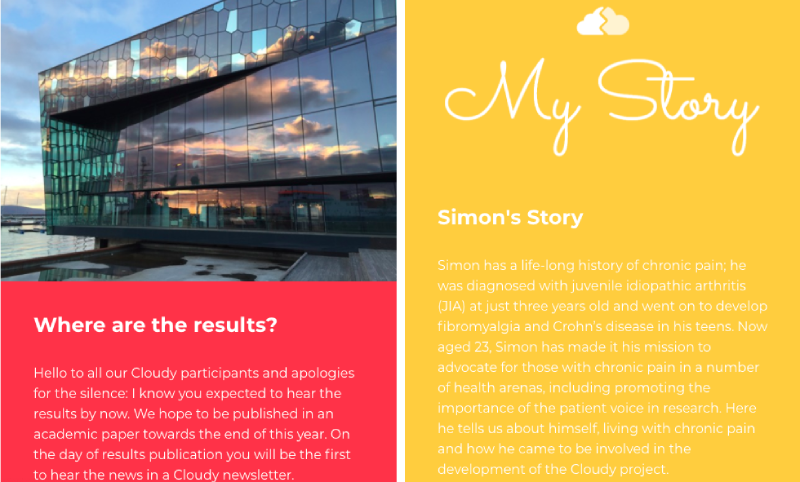
Q4: What were your results?
It took a while to analyze the results, but eventually we did conclude that there was a statistically significant association between weather and pain among the participants in our citizen-science project. The most robust results were that low pressure over the UK (and its accompanying weather) was more likely to be associated with pain events in our citizen scientists and that high pressure over the UK was less likely to be associated with pain events. This result is consistent with the conditions that many people say are associated with their pain events.
Q5: What did people think about these research results once promoted in the media, and how was it different from previous ones?
A: There were two kinds of feedback. One group was very supportive of us and were happy that some group would finally tackle this problem. The other group saw our work as a waste of time because “we all knew this already”. Instead of being discouraged by the comments, we went beyond the noise and took it as part of the problem we were trying to solve. Our study went beyond the previous results because it was the largest study to date, which ensured that our results were statistically significant, as well as meaningful for our participants.
Q6: What’s next?
A: We are using the data we collected during Cloudy With a Chance of Pain and looking into building a pain forecasting tool. This tool would use more than just the weather, which is only a secondary effect on people’s pain, when compared to the amount of physical activity, their mood, or how well they slept. Thus, we hope such a tool would allow more people to be able to plan their activities around their forecasted pain levels, of which the weather would be just one component.
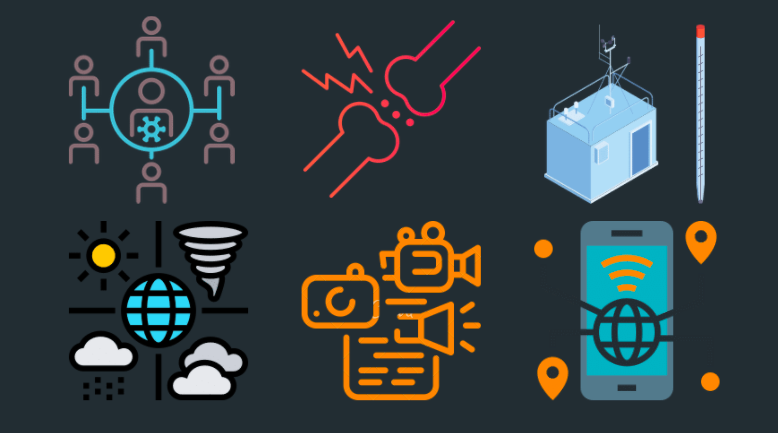
A pain forecast! That sounds really cool. Let’s look forward to that! Check out more information about this fantastic citizen science project.
Here’s the official website for the project: https://www.cloudywithachanceofpain.com/the-project
Here are two publications:
Check out more project videos: https://www.youtube.com/playlist?list=PLoXO9VIadGbztMmwNKC8_YatIJuzYK32a
--We hope to promote citizen science by showing the general public what’s happening in that world and encourage more people to get involved. We also want to create a platform for various citizen science projects to share their journeys.--
Users Login